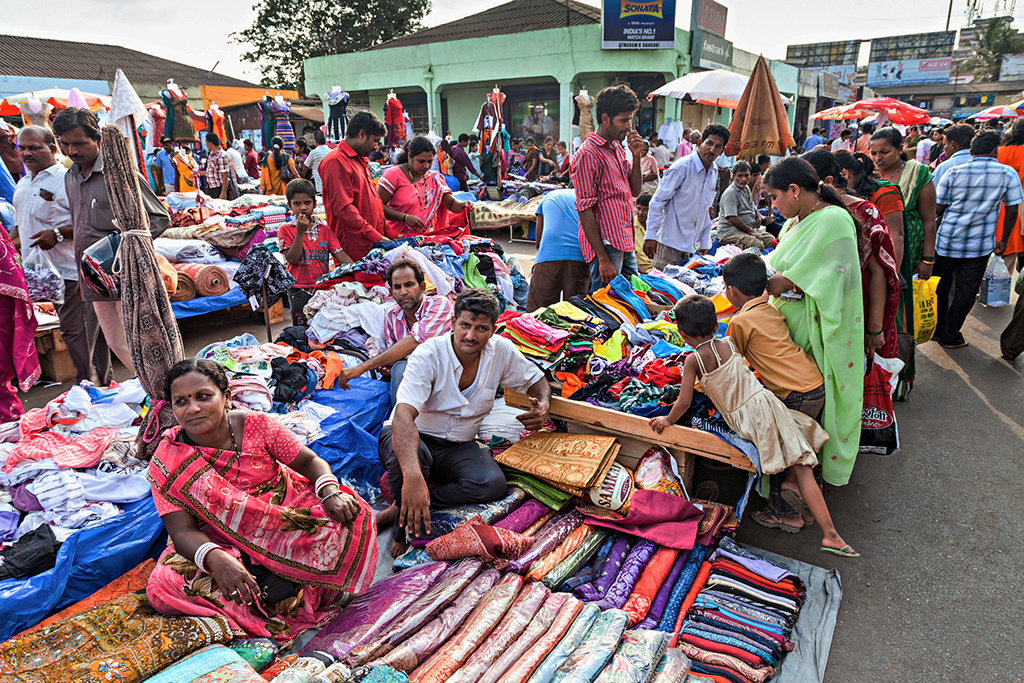Targeting Product Design for the Developing World
Designing products for the developing world can be a hit-or-miss endeavor: While there may be a dire need for products addressing problems such as access to clean water, sanitation, and electricity, designing a product that consumers will actually buy is a complicated process. More often than not, such products — even those that are distributed at no charge — go unused due to poor quality, unreliability or differences, in cultural expectations.
Based on Professor Yang’s studies, designing for microentrepreneurs’ needs can increase a company’s chances of succeeding in an emerging market
In a new MIT study, Associate Professor Maria Yang and her research team suggest that microentrepreneurs are a promising and largely untapped market. They say designers will have more success in developing countries by targeting products to microentrepreneurs, particularly if such products are designed to help make these small businesses money.
“If you can convince them you can make them money, you’re most of the way there to selling them your product,” says post-doc Jesse Austin-Breneman (PhD ’14). “It seems obvious, but if you look at a lot of products out there, they’re not really doing that.”
Austin-Breneman and Maria Yang, the Robert N. Noyce Career Development Associate Professor of Mechanical Engineering, combed through the literature on product design in emerging markets and identified four case studies in which products had documented success in developing countries: solar-lighting technology, cookstoves, drip irrigation, and a line of Nokia cellphones.
From their research, as well as interviews with product designers, the researchers drew up guidelines on how to design for emerging markets. In addition to designing products that can be profitable for consumers, the team advises designers to consider designing for reliability and service, as well as multifunctionality.
“We’re trying to refocus people’s design thinking,” Austin-Breneman says. “For example, rather than figuring out a clever way to fix sanitation, let’s come up with a clever way to make people money that’s perhaps in the sanitation sector.”
Beyond affordability
One of the most successful products in emerging markets, the researchers found, was a line of entry-level cellphones manufactured and distributed in developing countries by Nokia. The company designed phones with a number of features that turned out to have wide appeal for microentrepreneurs: Multiple contact lists allowed cellphone owners to rent out their phones to others, and a time display marking the length of each call served as a method of metering — an easy way for cellphone owners to charge per call.
Nokia also provided reliability via dedicated service vans that traveled to rural Indian villages to fix broken phones. This combination of features that help to make customers money, along with a service plan that established a continuing relationship with the company, likely swayed customers toward Nokia’s phones.
Yang and Austin-Breneman found that service and reliability were also big factors for small farmers in choosing a system for drip irrigation — an efficient means of delivering small amounts of water directly to the base of each plant. Farmers tended to choose systems that came with service plans, along with extras beyond the irrigation system itself. For example, some companies offered classes on the types of seeds that would likely be most valuable in the future — information that could help a farmer’s bottom line. The researchers also found that modular irrigation systems were attractive: Farmers could easily buy a small system, then add more components as their farms grow.
In the case of solar lighting, products that were multifunctional were most popular with microentrepreneurs. In particular, lights that doubled as cellphone chargers helped small businesses in two ways: The lights kept an owner’s store illuminated at night, driving more traffic to it, and the owner could rent the light as a charger for customers’ cellphones.
Interestingly, the researchers found that in all cases, microentrepreneurs tended to prefer products that were not necessarily the cheapest available: Factors such as reliability, profitability, and multifunctionality often trumped affordability.
“If a microentrepreneur has, say, a small cart, they don’t have a lot of capital to risk, and are more risk-averse,” Austin-Breneman says. “But if they believe your product can be serviced and can make them money, that can be successful.”
Stephen Anderson-Macdonald, a principal investigator at the London Business School, studies finance and entrepreneurship in emerging markets. He doesn’t see many large companies designing products for the developing world — oftentimes, he says, they simply repackage products into smaller, more affordable sizes.
“I wouldn’t call that product design,” Anderson-Macdonald says. “This study is unique in that not many people are focusing on microentrepreneurs as a market or phenomenon. You can actually design products that are beneficial for them because it’s better for their business. There’s massive opportunity.”
Going forward, the team will be looking through many more case studies, and perhaps focusing on one specific market sector. Yang says they will also dig deeper into the elements of product design to understand how both large companies and small startups can successfully sell to developing countries. For example, while Nokia was able to invest millions of dollars in developing a service network, a startup may not have such resources.
“We want to create design guidelines, based on research, that companies and also independent designers can be inspired by to develop products that are going to be successful, empower microentrepreneurs, and help people improve their lives and communities,” Yang says. “That’s sort of the Holy Grail, and will make a strong impact in emerging markets.”



